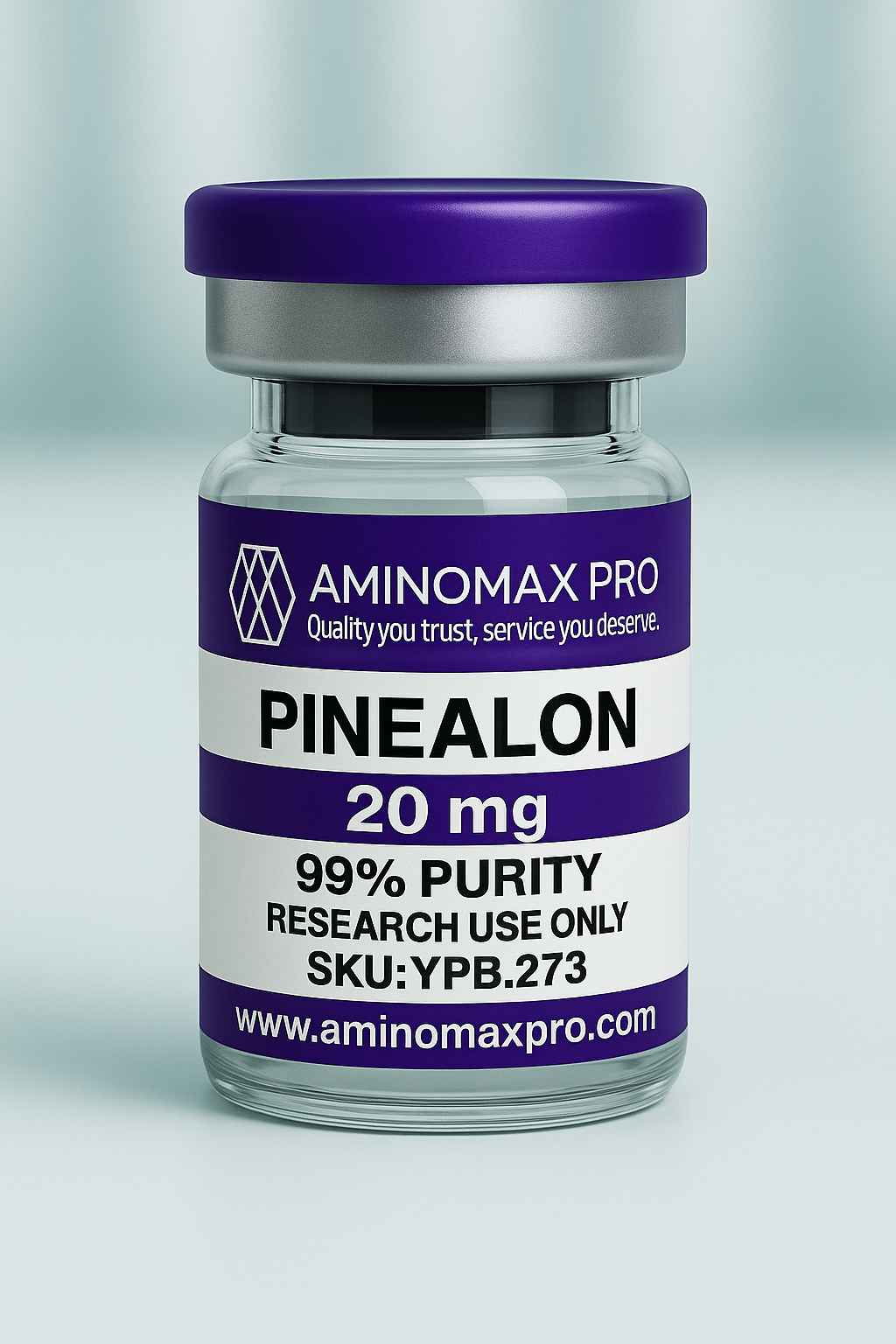Description
Pinealon – Technical Biochemical Mechanism Profile
(Synthetic Tripeptide – Glu-Asp-Arg; Telomere, DNA-Repair & Neurogenic Gene Modulation – Research Use Only)
Pinealon is a synthetic tripeptide (Glu-Asp-Arg) reported in cellular and genomic research models to influence DNA repair pathways, neuronal survival signaling, and telomere-stability gene networks.
In vitro studies associate Pinealon with telomerase expression, oxidative-stress response genes, and mitochondrial redox enzymes, suggesting transcriptional modulation rather than direct receptor binding.
✅ 1. Molecular Interaction Overview
Pinealon is proposed to act through nuclear transcription modulation and epigenetic regulatory pathways, influencing expression of:
-
TERT (telomerase reverse transcriptase)
-
SIRT1 / SIRT3
-
FOXO1 / FOXO3a
-
p53 / p21 (DNA damage checkpoint)
No direct ligand-receptor binding has been identified; activity appears intracellular and transcriptional.
✅ 2. Telomere & Genome-Stability Targets
Observed gene-expression effects in research models include:
| Gene / Protein | Function |
|---|---|
| TERT | Telomere extension |
| TRF1 / TRF2 / POT1 | Shelterin proteins protecting telomeric ends |
| p53 / p21 | Cell-cycle arrest & DNA-damage response |
| GADD45A | DNA repair signaling |
Reported molecular effects:
-
↑ telomerase activity markers
-
Stabilization of single-stranded telomeric DNA via shelterin proteins
-
Reduced DNA double-strand break signaling
✅ 3. Antioxidant & Mitochondrial Pathways
Pinealon has been linked to transcriptional upregulation of endogenous antioxidant systems:
| Enzyme | Molecular Role |
|---|---|
| SOD2 (Superoxide Dismutase-2) | Converts superoxide → hydrogen peroxide |
| CAT (Catalase) | Converts hydrogen peroxide → water/oxygen |
| GPX1 (Glutathione Peroxidase-1) | Detoxifies peroxides |
| HO-1 (Heme Oxygenase-1) | Cytoprotective oxidative-stress response |
This is commonly associated with Nrf2/ARE pathway activation:
-
↑ NFE2L2 (Nrf2) nuclear translocation
-
↑ antioxidant response element (ARE)-driven genes
✅ 4. Neurogenic & Synaptic Gene Activity
Neural-cell studies show transcriptional changes such as:
-
↑ BDNF (Brain-Derived Neurotrophic Factor)
-
↑ NGF (Nerve Growth Factor)
-
↑ Synaptic plasticity genes (SYN1, PSD95, GAP43)
-
↓ pro-inflammatory cytokines (IL-1β, TNF-α expression)
Pathway signals associated:
-
PI3K–Akt phosphorylation
-
MEK/ERK activation
-
CREB-dependent transcription of neurotrophic genes
✅ 5. DNA Damage & Cell-Cycle Regulators
Pinealon correlates with reduced markers of genotoxic stress, including:
-
↓ γ-H2AX (double-strand break marker)
-
↓ caspase-3 cleavage
-
↑ p21 and GADD45A expression in checkpoint regulation
✅ 6. Gene Families Commonly Measured in Pinealon Research
| Category | Example Gene Targets |
|---|---|
| Telomere Maintenance | TERT, TRF1, TRF2, POT1 |
| Antioxidant / Detox | SOD2, CAT, GPX1, HO-1, NQO1 |
| Neurotrophic Factors | BDNF, NGF, CNTF |
| Mitochondrial Function | PGC-1α, NRF1, TFAM |
| Cell-Cycle / DNA Repair | p21, p53, GADD45A, RAD51 |
| Inflammatory | TNFA, IL1B, IL6 |
✅ Mechanistic Summary
-
Synthetic tripeptide (Glu-Asp-Arg)
-
Influences telomerase signaling, shelterin stabilization, and DNA-repair pathways
-
Upregulates SIRT-FOXO antioxidant axis
-
Activates Nrf2/ARE transcription of oxidative defense enzymes
-
Enhances expression of neurotrophic & synaptic genes in neural assays
-
Reduces molecular markers of oxidative and genotoxic stress
✅ Research-Only Classification
Pinealon is supplied exclusively for in-vitro laboratory use, not for human or animal consumption, injection, therapeutic use, or biological application.


